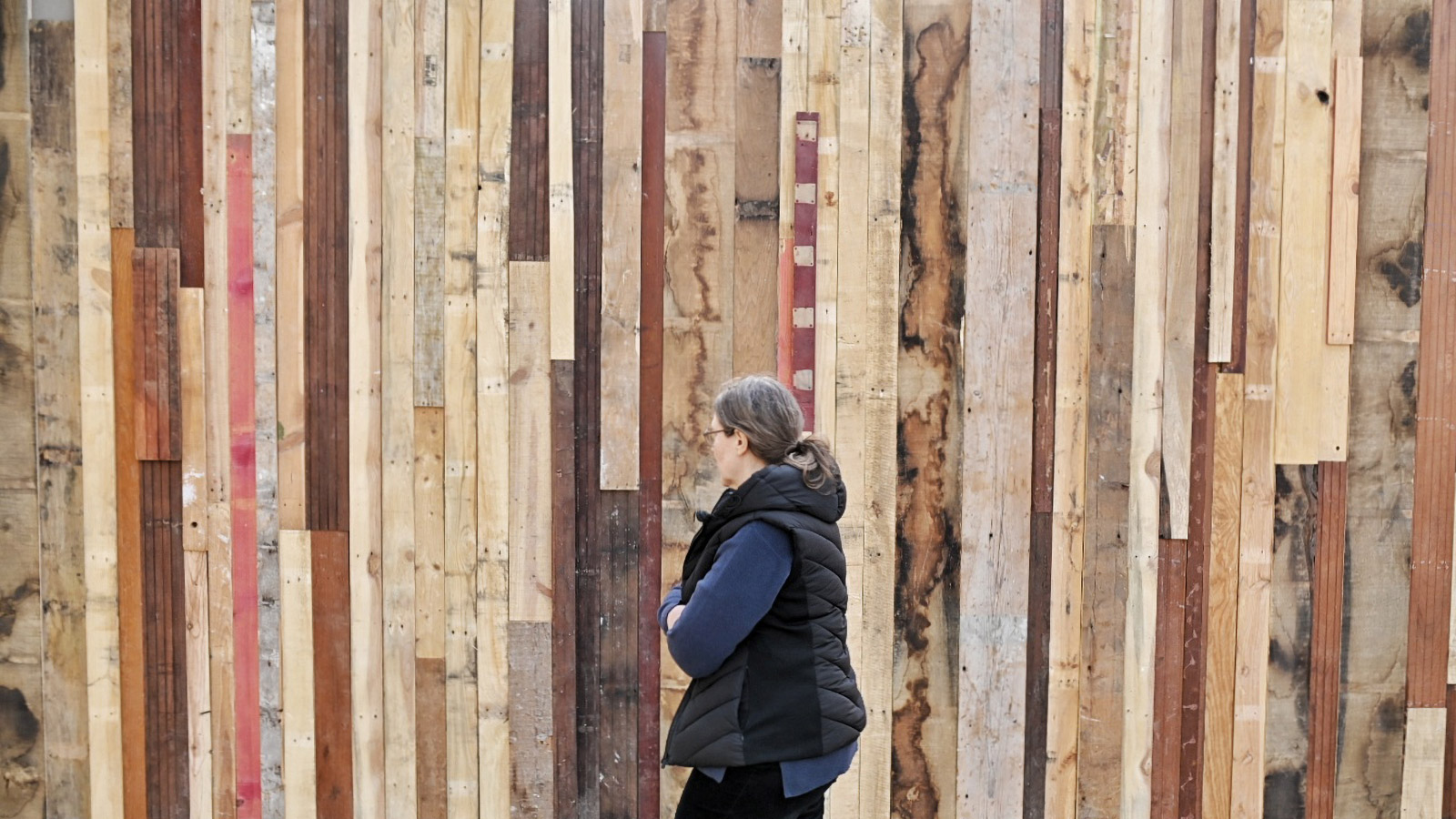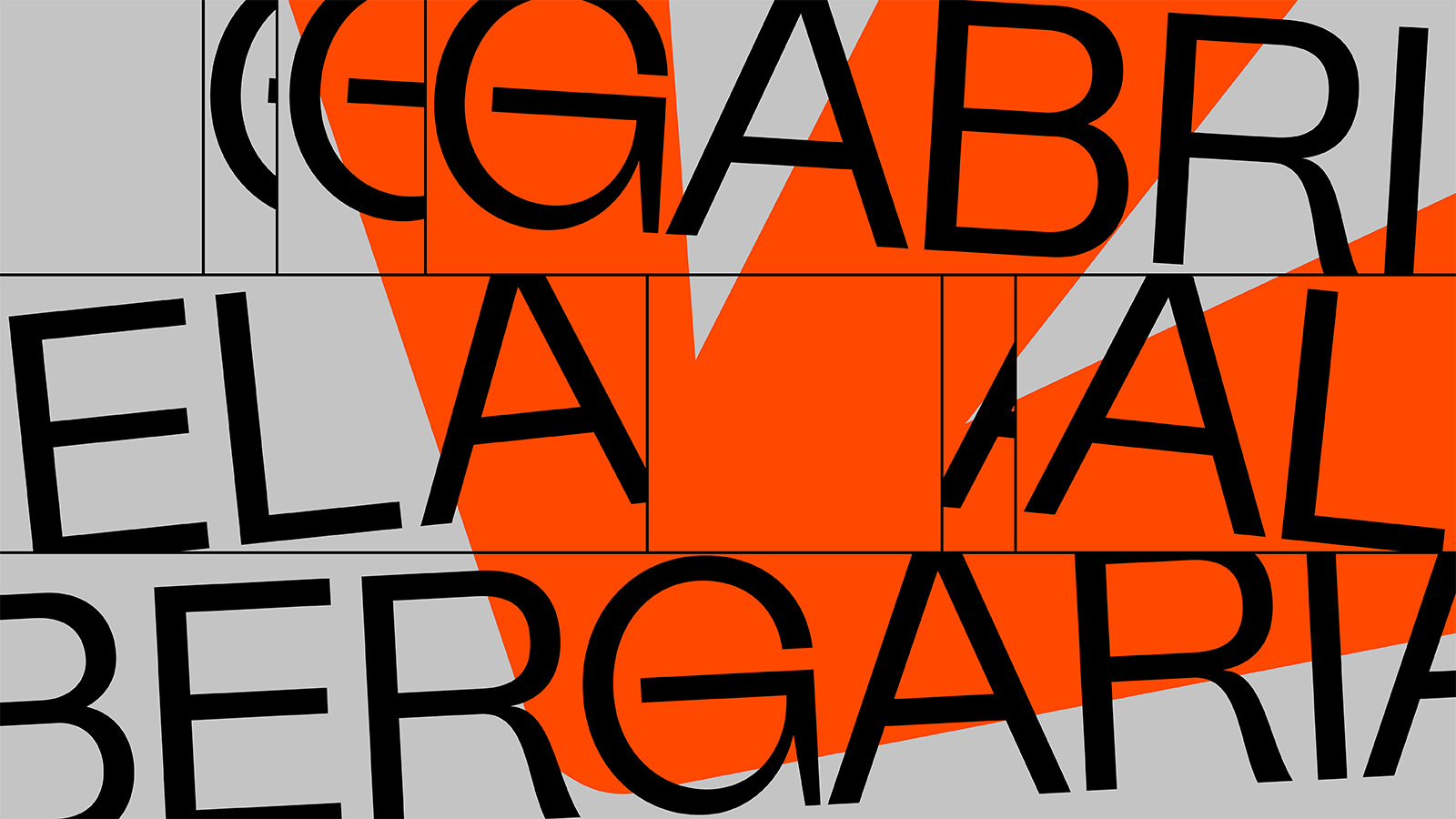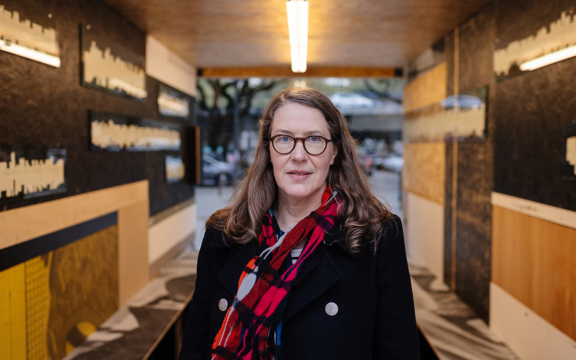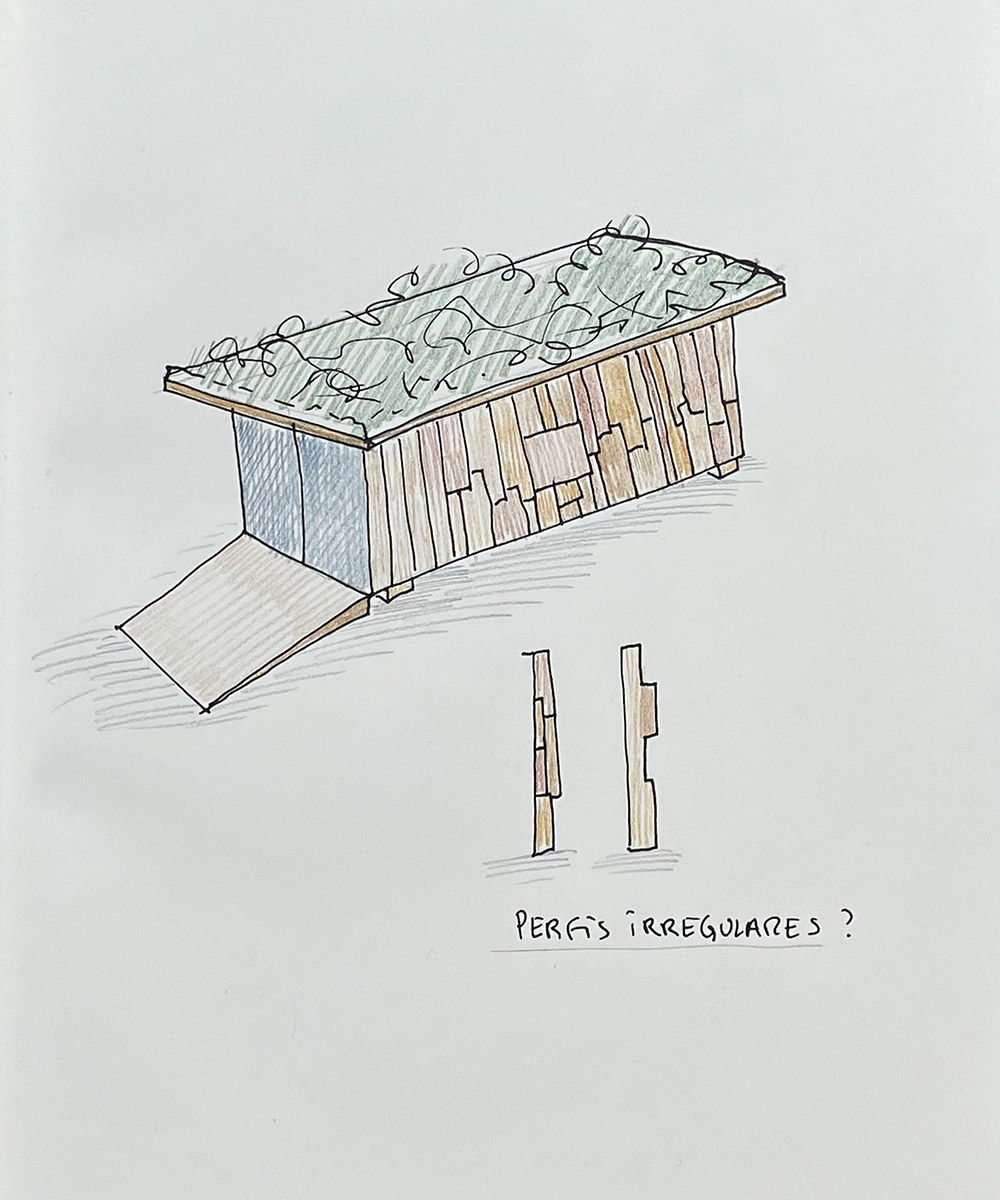
CAM in Motion: Gabriela Albergaria
Can we go in a new direction?
Event Slider
Date
Location
Praça do Centro Comercial Fonte Nova LisbonIn her latest installation, the artist combines the themes that have long characterised her work, linking cultural, historical and economic relations to nature in its Western tradition. In Gabriela Albergaria’s work, these relations are expressed and explored by reflecting on the garden and landscape (as natural spaces that have been designed, built and are managed) and on the acclimatisation/displacement of plants as a symbol of intensive, extractivist practices in the broader context of the colonial project (colonisation of nature).
More recently, the artist’s work has taken on a greater sense of urgency as it seeks to challenge the predation and destruction of ecosystems, which is a theme that runs throughout this latest project. Gabriela Albergaria has produced a visually generous, sensory, empathetic installation/intervention, where she creates a space for mediating and activating knowledge (informal and/or ancestral), poetically re-enacts activities focused on regenerating, restoring and reusing practices, materials and used objects and reflects on the issue of waste.
Featuring a sculptural dimension, the interior and exterior of the container are covered in used materials that have been salvaged and reused and there is a small sustainable garden on the roof, which will be planted at the exhibition opening (seed bomb workshop led by Leonor Pêgo). On the inside of the container, phrases from the book Derechos de la naturaleza: Ética biocéntrica y políticas ambientales by Eduardo Gudynas written in coloured pencil on reused paper explore systems for valuing nature.
In the title of the project – Can we go in a new direction? –, inspired by Ben Okri’s short story After the End, the artist asks a question that is central to our collective existence on the planet: can we still change direction, learn or invent new ways of being and doing together, altering our predatory, consumerist relationship with nature? Gabriela Albergaria has imagined the container as a shared space to be inhabited, where the productive flow of our everyday lives can be interrupted and participatory actions, interventions and workshops can be held, bringing residents, associations and local organisations together.
The container, which has been set up at the entrance to the Fonte Nova shopping centre in Benfica, stands in a square that is viewed by the artist as a microcosm of the ambivalences present in cities like Lisbon: it has a small kiosk with tables and chairs but the jacaranda trees instead provide shade for the cars in a huge car park near the highway. Not far away, almost right next to it, the city meets the immense green area of Monsanto. The project negotiates this unique geography, between a dense urban area and Monsanto Forest Park, representing a potential starting point for considering new directions in the spaces and places that we inhabit.
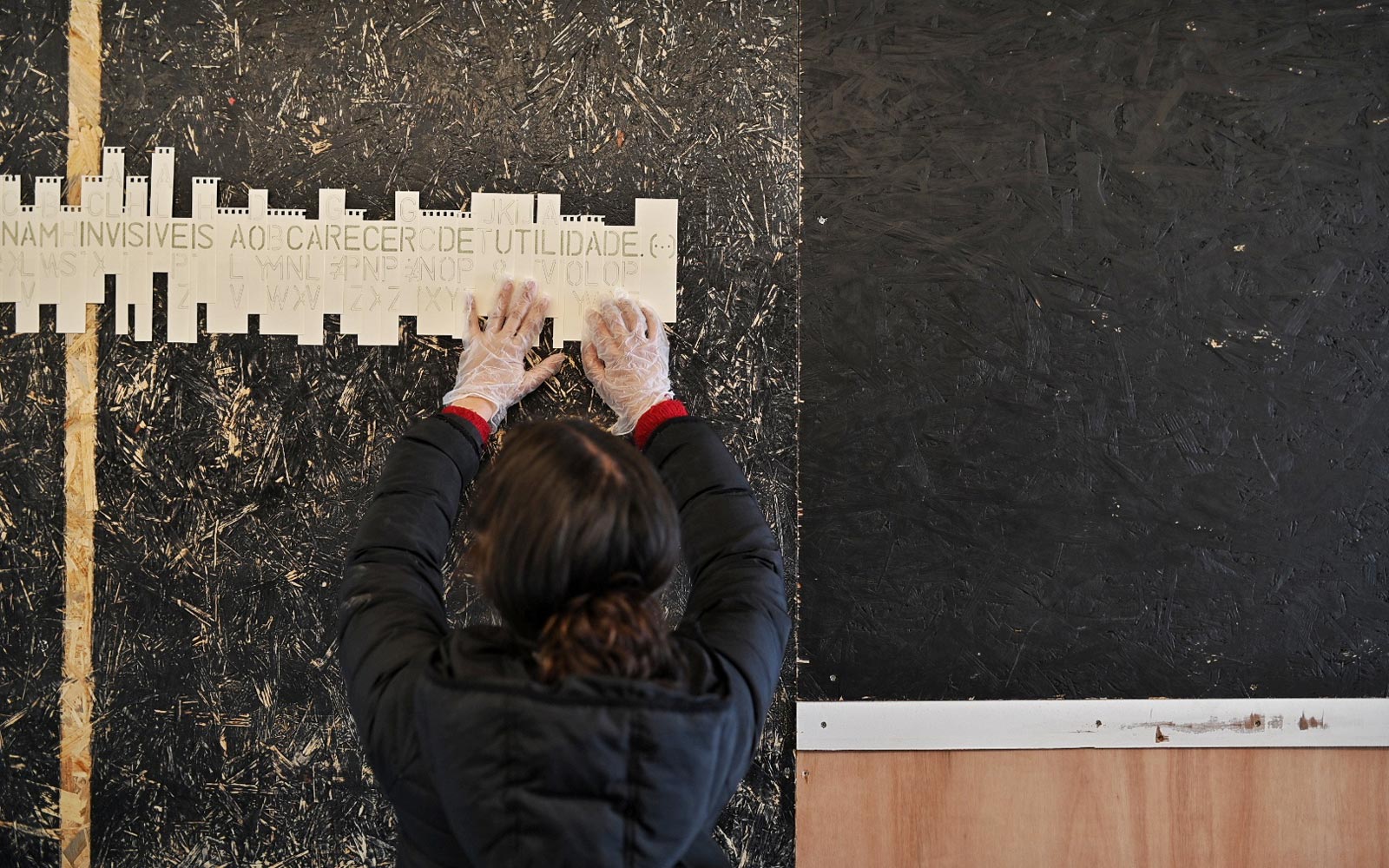
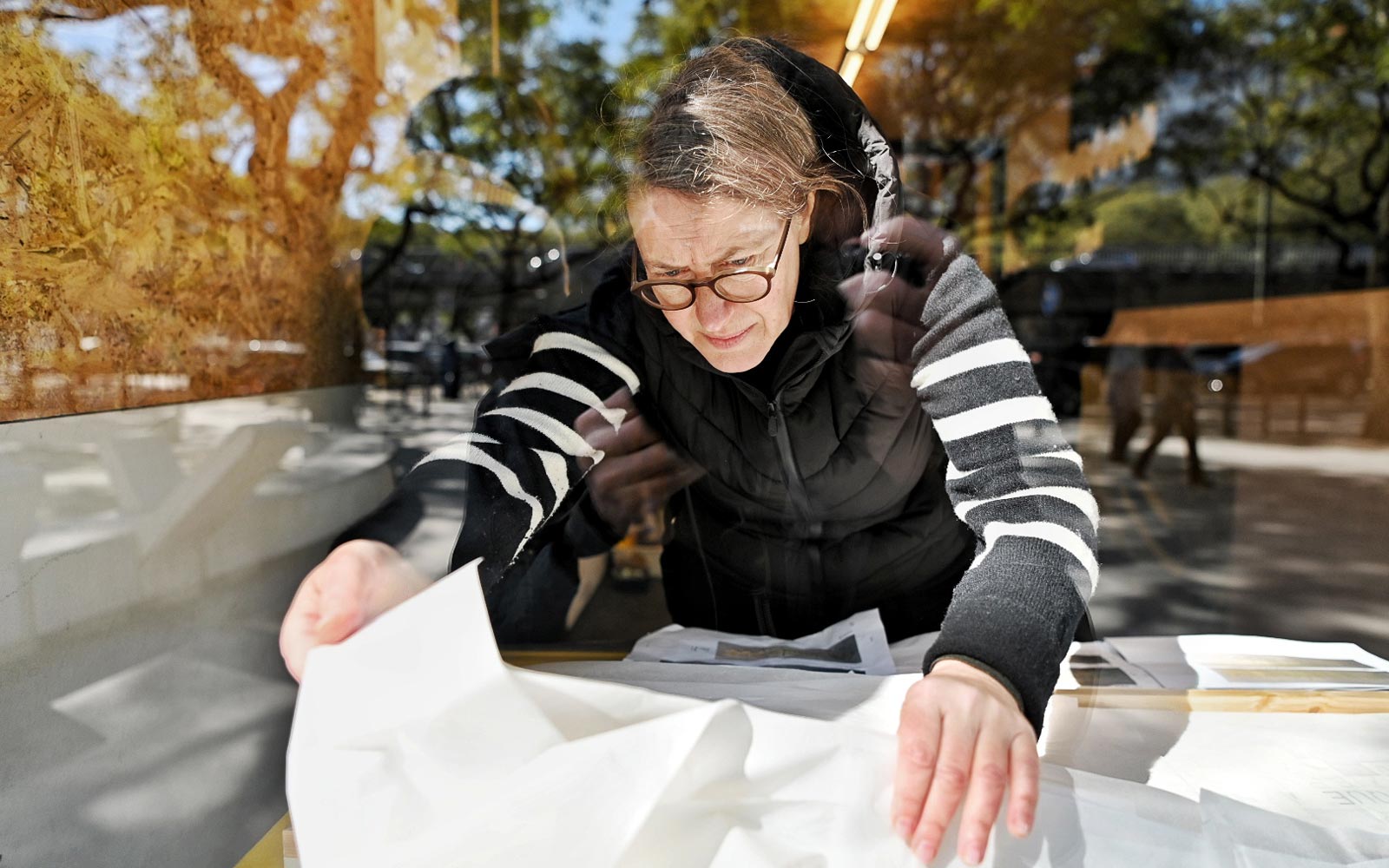
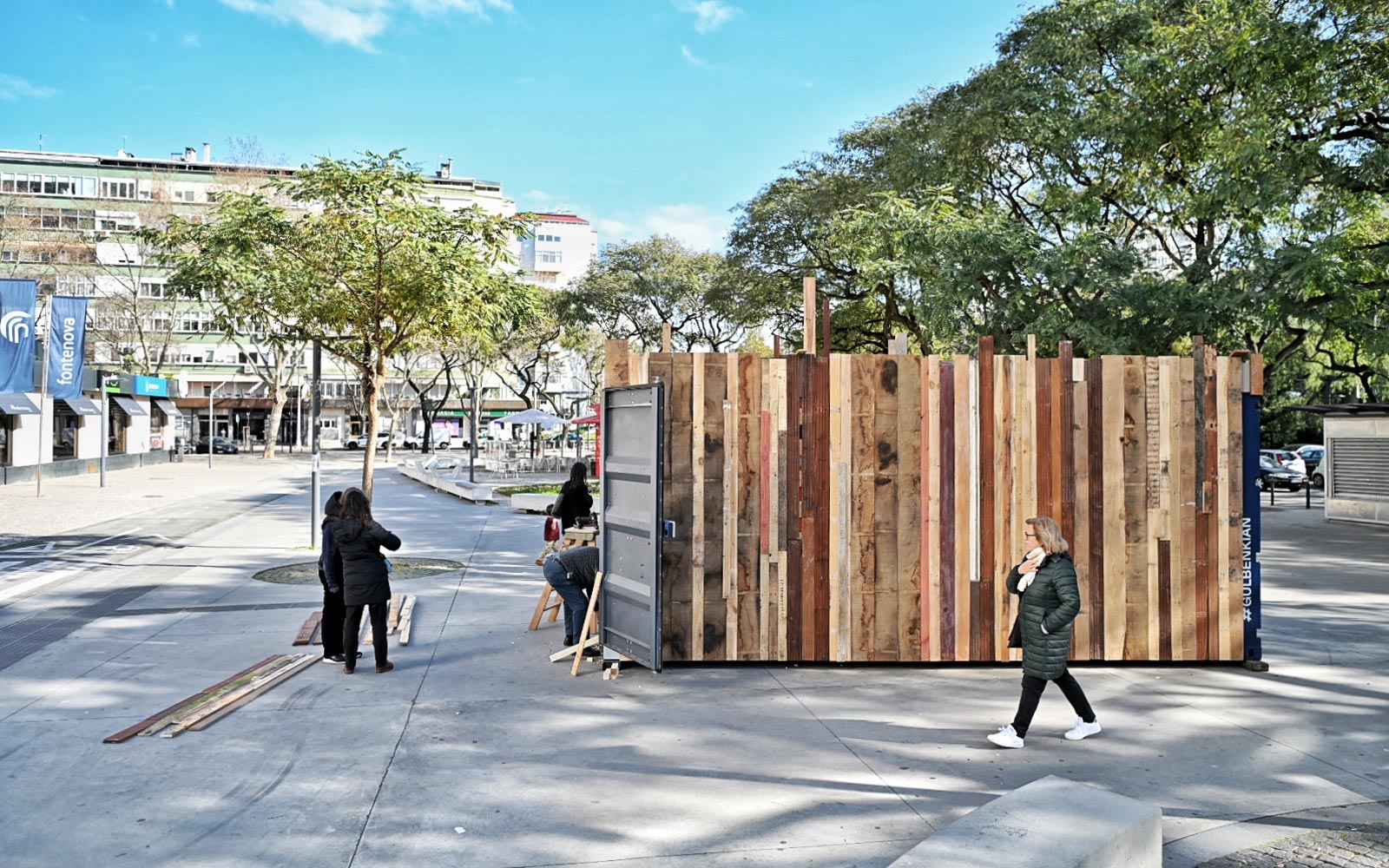
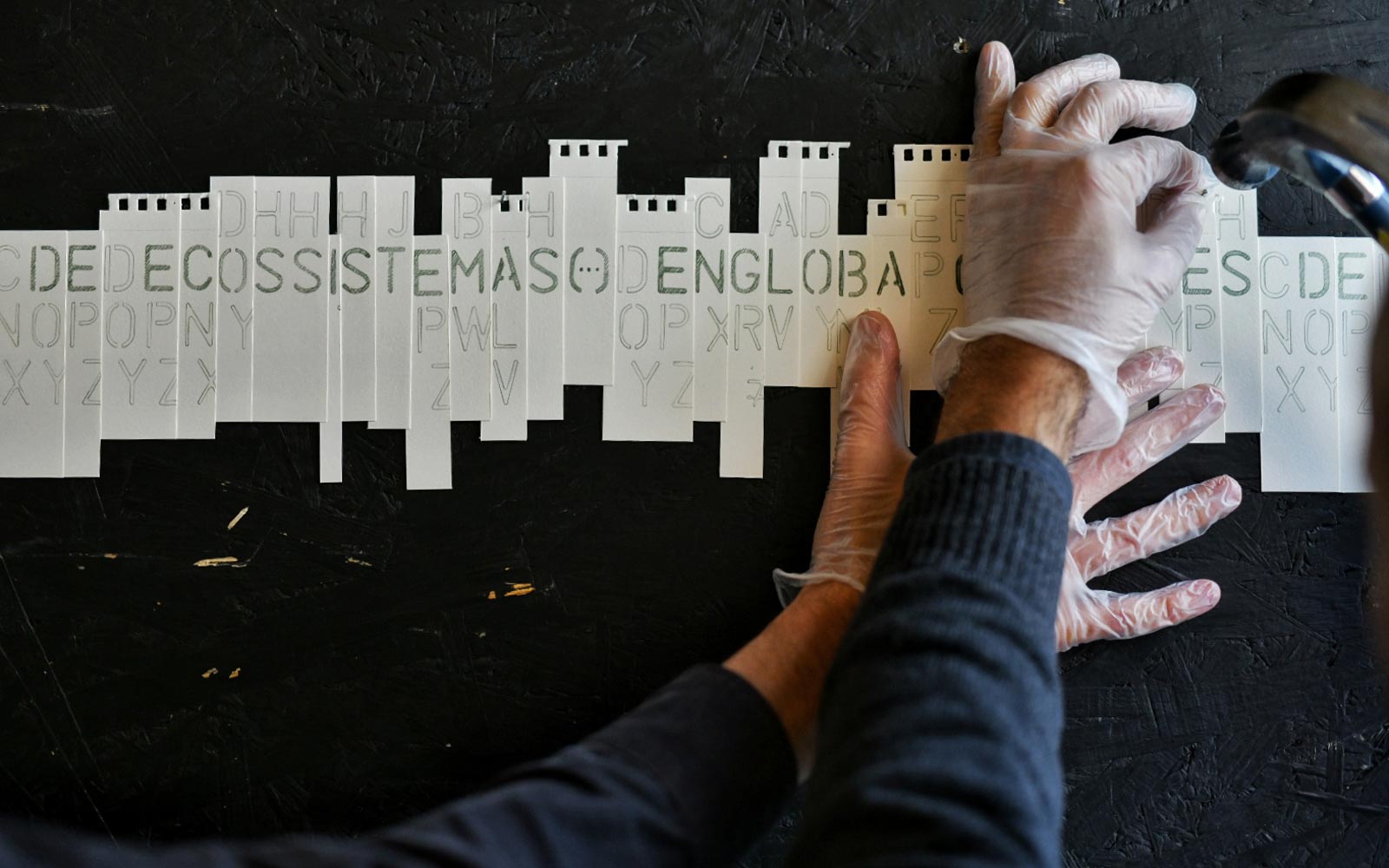
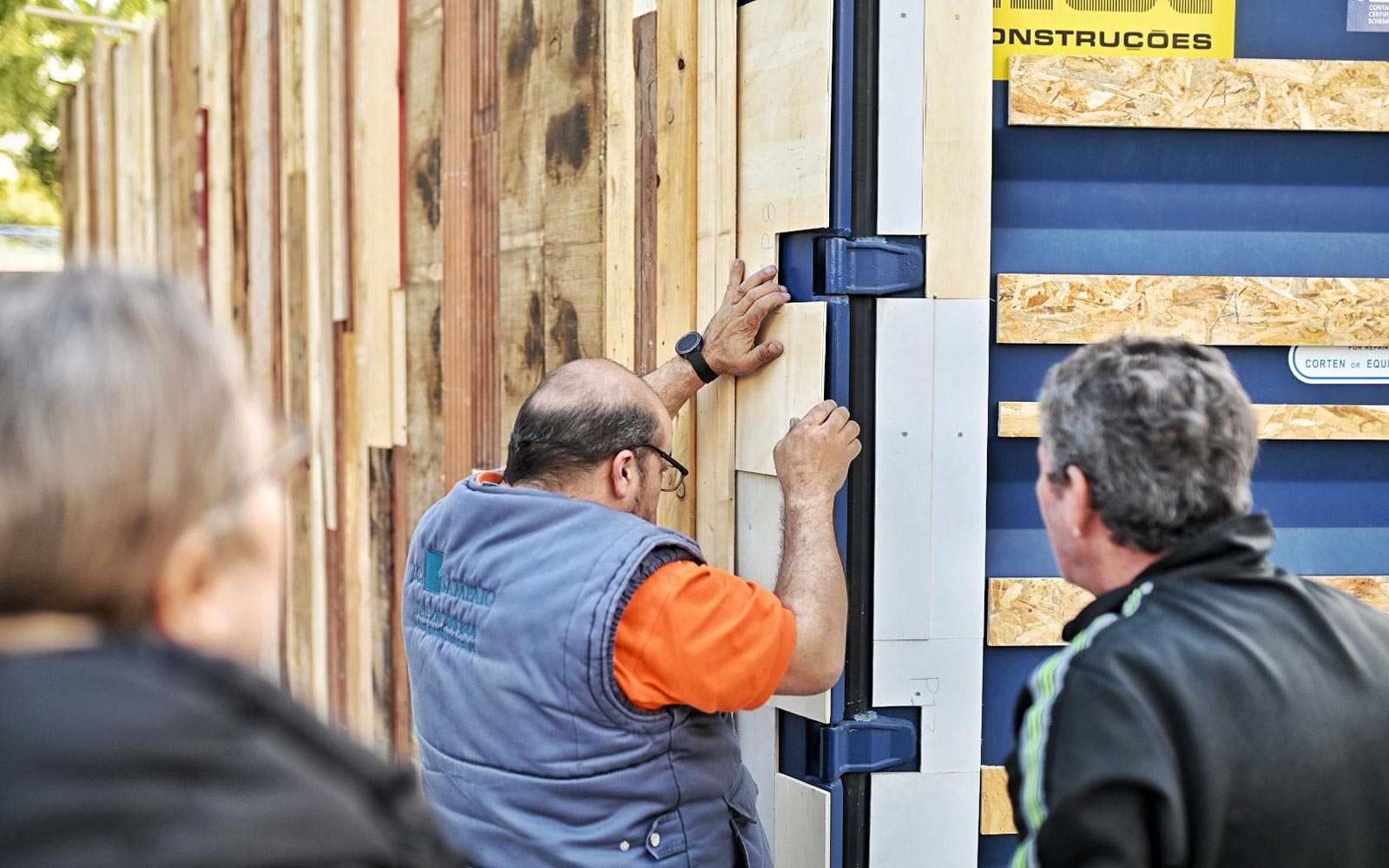
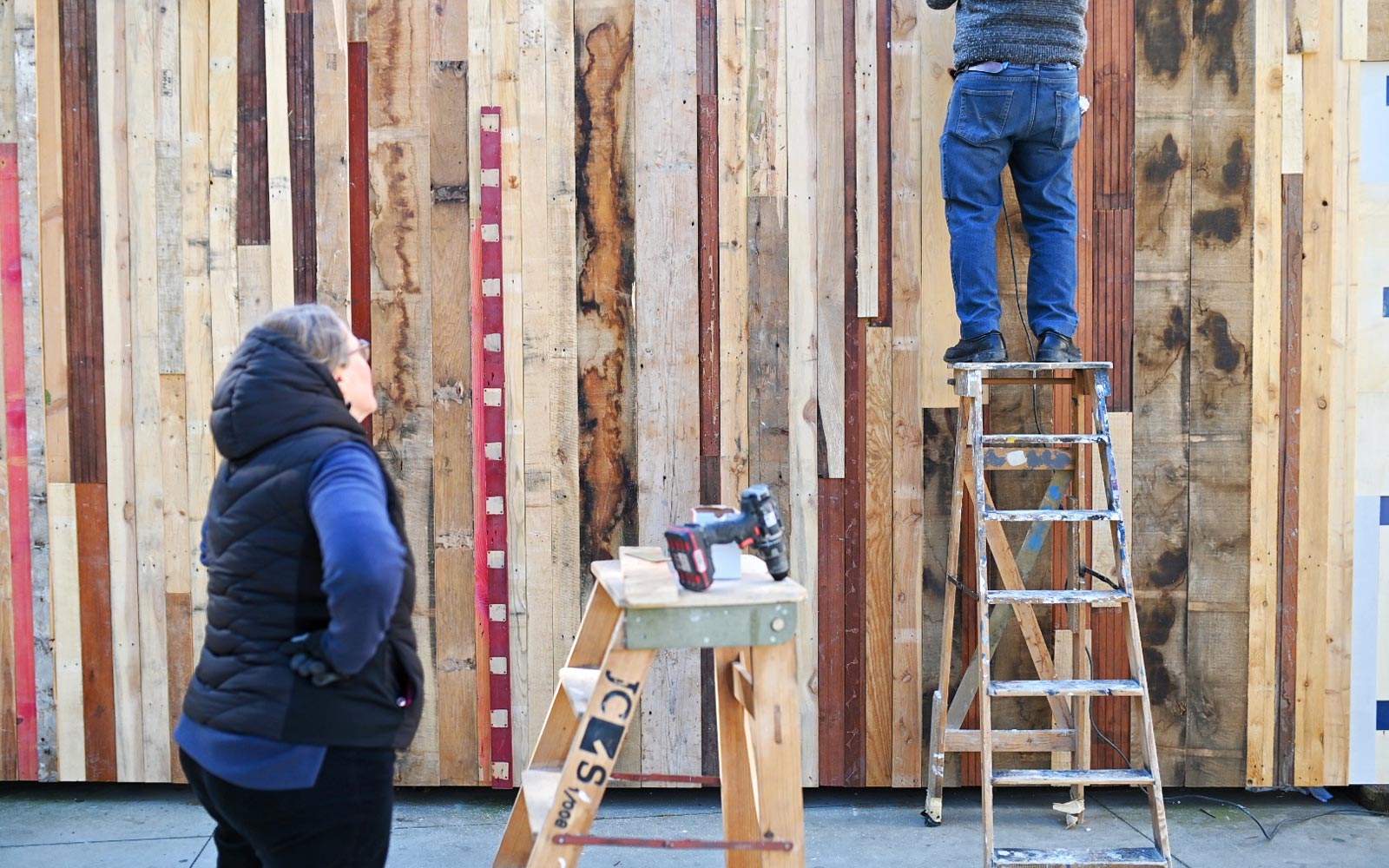
In all my work as an artist, I am concerned with building links to nature in a way that draws attention to the need for an alliance between humans and the natural world. To this end, I have studied more vernacular fields of knowledge such as agriculture and gardening, as well as areas of science, anthropology, etc.
Some projects were also inspired by visiting places where nature is present. I have visited and continue to visit historical and other landscapes that arouse my curiosity in some way.
I joined a trip to the Amazon with a group of scientists and I have been on field trips in the United States, where I visited natural parks and explored landscapes that were unfamiliar to me. Whenever I can, I travel to more or less remote places, or even just wander around the forested garden behind my house or the square with two trees in that I regularly walk through. During these visits, I collect images, drawings, objects and stories, which I then bring into the studio and use to design possible pieces.
In recent years, I have developed an interest in salvaging and reusing materials and I endeavour at all times to use materials that are relatively perishable, do not harm the environment and can be returned to the land, to the soil, sooner or later in some way.
This piece, which I have named Can we go in a new direction? [Podemos seguir numa outra direção?], is based on the premise suggested by the project itself: a container that can contain contemporary art.
On the one hand, a receptacle; on the other, an attitude.
From the outset, I was keen to use the space in the container as a space, but also as a place for hosting activities.
When I pondered on the container as a space for containing art, I immediately rejected the idea of observing art in a container because it did not seem appropriate to me for reasons that I am unable to explain.
What I wanted to do was to create a shared space, sporadically inhabited by community activities that would educate or draw the attention of the public passing by the site in Benfica in some way.
The container is located at the entrance to a shopping centre, but it is also next to a wonderful little ‘plantation’ of jacaranda trees which, unfortunately, cast shade over the car park rather than the garden benches.
There are some fast roads around the site but it is also very close to Monsanto Forest Park, which can be reached on foot. Nearby, there is a kiosk to buy a coffee and some tables where you can sit and drink it. There were many other details that contributed to me deciding that the best use of the space would be as an activity room, to invite people to think about whether we could in fact go in a new direction.
An activity that involves rethinking our attitude to waste.
The idea of reviving or redirecting attention to the details of, for example, the full cycle of nature by (re)observing more vernacular ways of doing things. Salvaging, mending, reusing. They were the starting points for this piece/space.
The idea is to use wood from earlier constructions and cover the two sides of the container to create walls where the history of the wood is present. On the two ends, the container retains its original appearance.
Ideally, the rooftop will be a ‘green’ roof. This evokes nature and reflects the popular idea in architecture of using soil and green roofs as a way to cool houses.
In this way, I believe I have created a space that is also related to sculpture to some degree. If we close the doors of the container, we have four different perspectives and a top that lends another dimension to what could be a sculpture.
The interior echoes the exterior but will be treated as if it were new wood. It will probably need sanding. The floor and ceiling will also be made from wood.
The idea is to create a wooden cabin, albeit a rather strange one. Sofia came up with the idea of having a glass or acrylic wall on the end and we have the designs that she submitted. This glass wall allows natural light to enter and relieves the claustrophobia that people might experience inside the space. We need artificial lighting. Rows of daylight fluorescent tubes.
An access ramp will lead to the interior and the doors must be opened every morning and closed every night.
The interior walls will be used to display another piece that I have been working on – I think this is an ideal location for it. It features texts written on different reused papers in coloured pencil. These lines of text, some longer than others, will be displayed in such a way as to create different meanings and connections.
The texts are taken from the book Derechos de la naturaleza: Ética biocéntrica y políticas ambientales by Gudynas and explore systems for valuing nature. They might need to be protected by simple acrylic plaques to avoid theft and stop people from touching them.
They could be affixed to the wall with magnets and protected with acrylic plaques cut to size. Or I could come up with another solution to concentrate all the texts in one area and have one large acrylic plaque in that area.
The interior of the space will be fitted with tables and benches to allow a series of workshop activities to be held there. These activities will be led by the CAM education department.
Gabriela Albergaria
6 December 2022
Gabriela Albergaria's (Vale de Cambra, 1965) work involves one territory: Nature. A nature manipulated, planted, transported, set in hierarchy, catalogued, studied, felt and recalled through the ongoing exploration of gardens in photography, drawing and sculpture. The artist views gardens as elaborated constructs, representational systems and descriptive mechanisms that epitomize a set of fictional beliefs that are employed to represent the natural world. Gardens are also environments dedicated to leisure and study, cultural and social processes that produce a historical understanding of what is knowledge and what is pleasure.
More generally, the images of gardens and plant species employed by the artist are used as devices to reveal processes of cultural change through which visions of nature are produced. Mediated by representation systems they generate different versions of what we see as landscape—itself a complex system of material structures and visual hierarchies, cultural constructs that define the framing of our visual field.
Since 1999 Albergaria has exhibited regularly around the world, including the following solo shows: Nature Abhors a Straight Line Fundação Culturgest, Lisboa; ...an adventure in which humans are only one kind of participant... at Galeria Vera Cortês, Lisboa Portugal (2019); Natures’s Afterlives, Sapar Contemporary, New York (2019); Ridge and Furrow (Vala e Cômoro), curated by Filipa Oliveira, Painters Garden – Botanical Garden of de Art Center Casa da Cerca,, Almada/ Lisboa 2019; Pinch Pinch Pinch, Projecto Intervenções, Museu Lasar Segall, São Paulo, Brasil (2018); Ah, Al Fin Naturaleza, Flora ars+natura, Bogotá, Colombia,(2016); Ah, Finalmente, Natureza, Fórum Eugénio de Almeida (Évora, 2015); Two Trees in Balance, Socrates Sculpture Park, New York (2015) and in 2013 in Galeria Vermelho, São Paulo and Hacienda La Trinidad Parque Cultural, Caracas, Venezuela

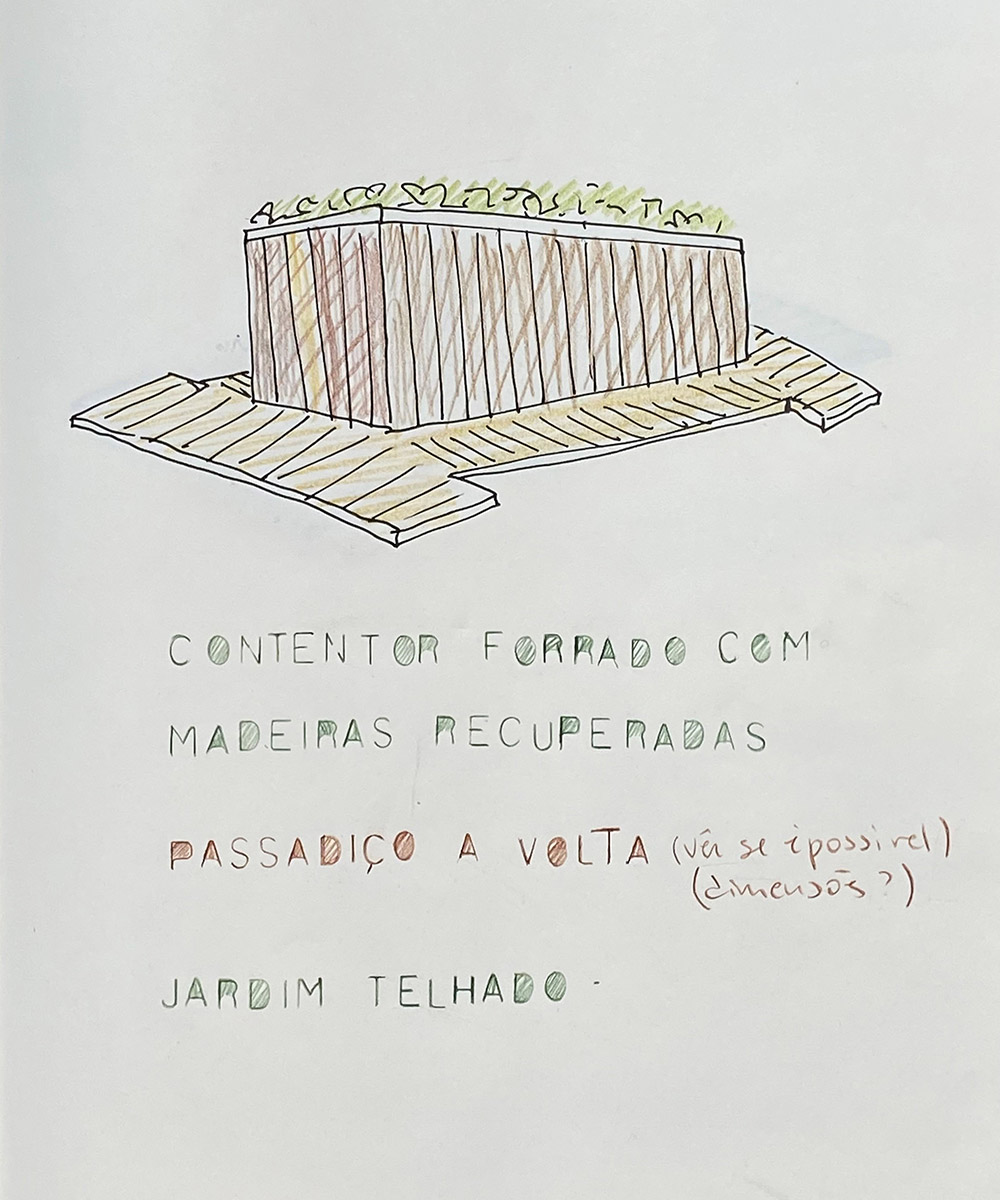
In Benfica, this project has the support of Junta de Freguesia de Benfica and Centro Comercial Fonte Nova. Grupo Blueotter provided the recycled woods.
CAM IN MOTION
CAM in Motion is an ‘outdoor’ programme that brings together a series of site-specific interventions by artists and exhibitions with works from the Collection in different spaces in the city of Lisbon and its surroundings.
More infoVideos
Credits
Curators
Rita Fabiana
Susana Gomes da Silva
